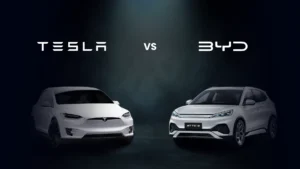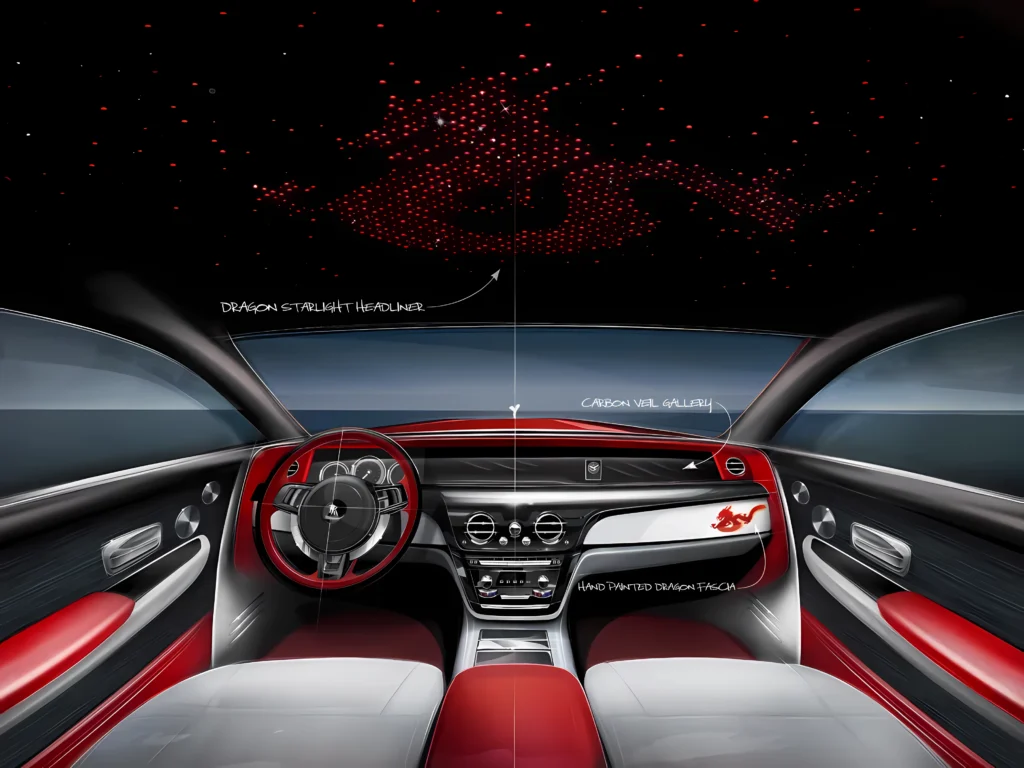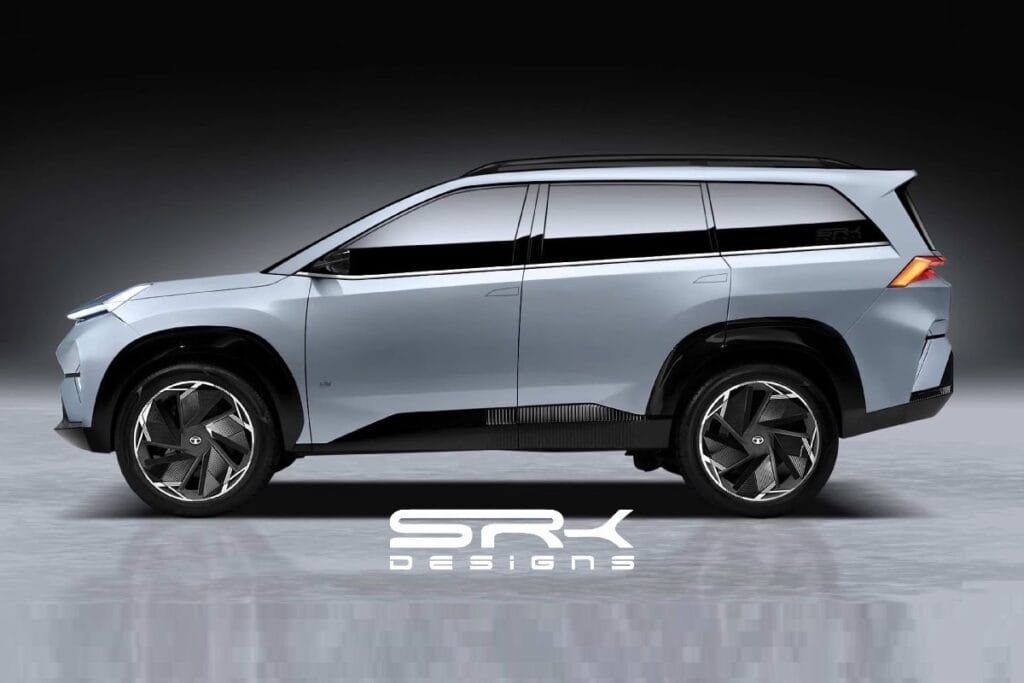The electric vehicle (EV) revolution is no longer a promise of the future—it’s the reality of today. At the heart of this transformation is an intense battle between two automotive giants: America’s Tesla and China’s BYD (Build Your Dreams).
Both companies are redefining mobility, spearheading the shift from internal combustion engines to battery-powered vehicles. Yet, despite Tesla’s head start and international acclaim, BYD has rapidly emerged as a formidable rival, poised to unseat Tesla as the world’s dominant EV manufacturer.
Tesla, founded in 2003, became the face of electric mobility, driven by Elon Musk’s vision to accelerate the world’s transition to sustainable energy. The company has enjoyed years of headwinds, particularly in the U.S. and European markets, thanks to its sleek designs, cutting-edge battery technology, and charismatic leadership. But Tesla’s dominance is now being challenged by a once-overlooked Chinese player: BYD.
Founded in 1995 as a rechargeable battery maker, BYD shifted into the auto industry in 2003 and has since become a juggernaut in China’s domestic EV market. It has leveraged its vertical integration, in-house battery production, cost control, and strong backing from the Chinese government to surge ahead in volume. In 2023, BYD overtook Tesla in global EV sales in the fourth quarter, signaling a major shift in industry dynamics and igniting a battle that goes far beyond market share.
China’s Homegrown Champion Rises
BYD’s rise is more than just impressive—it’s historic. With China being the world’s largest EV market, BYD has capitalized on domestic momentum and favorable policy environments. As of 2024, the company sold millions of EVs across its lineup, from the affordable Dolphin hatchback to the luxury Han sedan. It now dominates EV sales in China, leaving Tesla trailing in second place. The company’s deep understanding of local consumer preferences, aggressive pricing strategies, and innovation in battery technology—particularly its Blade battery—has set it apart from both domestic and foreign competitors.
What makes BYD especially powerful is its vertically integrated business model. While Tesla is renowned for its innovation, it still relies on external suppliers for many of its key components, especially in battery supply. BYD, by contrast, manufactures everything from batteries and semiconductors to electric motors and software in-house. This gives it greater control over supply chains, cost efficiencies, and speed to market—factors that are now giving it a competitive edge globally.
BYD is no longer content with dominating the Chinese market. It has launched aggressive export campaigns into Southeast Asia, Europe, and Latin America. Countries like Thailand, Brazil, and Germany have seen a surge in BYD’s market presence. In contrast, Tesla, while still expanding, is encountering challenges in some markets, including rising competition, regulatory scrutiny, and cost pressures. This global footprint expansion by BYD suggests that Tesla’s leadership in the EV space is far from guaranteed.

Price Wars and Market Strategy
Tesla and BYD represent two very different approaches to EVs. Tesla has long focused on premium vehicles, pioneering the electric luxury segment with models like the Model S, Model X, and the Model 3. While the company has made moves toward affordability—most notably with the Model 3 and Model Y—it remains, in most markets, a higher-priced brand. Tesla’s brand value is built on performance, innovation, and a tech-savvy image that appeals to early adopters and enthusiasts.
BYD, on the other hand, is betting big on mass-market adoption. It has crafted a lineup of EVs that cater to a wide range of consumers, particularly those in middle-income segments. BYD’s pricing advantage has been critical. For instance, its Dolphin and Atto 3 models undercut the Tesla Model 3 by thousands of dollars while offering similar ranges and tech features. The company’s ability to produce quality EVs at scale, and at lower costs, has sparked price wars that are disrupting the global EV landscape.
Tesla responded to the pressure with price cuts in various markets in 2023 and 2024. However, the sustainability of this strategy remains questionable, as profit margins shrink and investors grow wary. Meanwhile, BYD’s pricing structure is more resilient, underpinned by cost-saving efficiencies and government incentives. This ongoing tug-of-war in pricing is redefining EV affordability and accessibility, putting pressure on all players in the space.
Innovation at the Core
Tesla’s innovation has never been in doubt. The company has set industry standards in battery range, autonomous driving, over-the-air software updates, and high-performance EVs. Its Supercharger network remains one of the most reliable and expansive globally. Tesla’s focus on AI-driven technologies, including Full Self-Driving (FSD), is a cornerstone of its long-term vision, as Musk pushes toward a future of autonomous transport.
BYD, however, is no slouch in the innovation department. Its Blade battery, which uses lithium iron phosphate (LFP) chemistry, has been heralded as a safer, longer-lasting, and more cost-effective solution than traditional lithium-ion cells. BYD’s dedication to innovation also extends to vehicle architecture, energy storage systems, and even verticals like e-buses and electric trucks, where it already has a strong global presence.
While Tesla focuses heavily on software and a tech-first driving experience, BYD is pushing hard on product diversification. It now produces EVs, plug-in hybrids (PHEVs), and is even investing in energy infrastructure such as charging networks and battery recycling. This holistic approach gives BYD a broader foundation to build from, especially in emerging markets where charging infrastructure and cost remain barriers to EV adoption.
Government Support and Geopolitics
Another key factor in the BYD vs. Tesla rivalry is the geopolitical and regulatory landscape. Tesla operates largely in the open market, subject to investor scrutiny and democratic regulatory systems. While it has enjoyed subsidies, such as U.S. tax credits for EV buyers, it also faces increasing political and trade challenges, especially with U.S.-China tensions rising.
BYD benefits from China’s massive state support for its EV industry. Chinese policymakers have long considered EVs as a strategic industry, pouring billions into subsidies, tax incentives, and infrastructure. State backing has enabled BYD to weather market fluctuations and scale rapidly. In contrast, foreign automakers in China—Tesla included—are increasingly facing tougher local competition and regulatory pushback.
This dynamic is particularly relevant as both companies expand globally. In Europe, for example, there’s increasing scrutiny of Chinese EVs, with calls for tariffs and trade protections to guard against subsidized imports. The Biden administration is also taking steps to reduce dependence on Chinese-made batteries and EV components, which could affect BYD’s prospects in the U.S. market.
Tesla is navigating these waters by localizing production—its Gigafactories in Berlin and Texas are meant to reduce dependence on imports. BYD is adopting a similar approach, building new plants in Thailand and Hungary to meet regional demand and avoid tariffs. This global chess game will define the next stage of the BYD vs. Tesla battle.
The Brand Battle: Trust vs. Scale
Tesla’s brand is among the strongest in the auto industry. It has cultivated a loyal customer base and commands high levels of trust, particularly in the U.S. and Europe. Tesla buyers see themselves as part of a movement, a mission to change the world. The company’s design aesthetics, tech-first approach, and Elon Musk’s cult of personality all contribute to its brand equity.
BYD is newer to the global scene and still developing brand recognition outside China. While it has achieved household status domestically, its challenge lies in building consumer trust in unfamiliar territories. However, BYD’s partnership strategy—including tie-ups with local dealers, governments, and ride-hailing platforms—is rapidly changing that equation.
The brand battle is not just about awareness—it’s also about perception. Tesla is often seen as a luxury tech brand, while BYD aims to be the “Toyota of EVs”: reliable, affordable, and widely available. In a world where the next billion car buyers will come from Africa, Asia, and Latin America, BYD’s model may prove more adaptable and scalable in the long run.
Who Wins the Race?
Predicting a clear winner in the BYD vs. Tesla battle is premature. Tesla still leads in profitability, technology, and brand value. Its innovations have catalyzed the EV movement globally, and its roadmaps remain ambitious—from autonomous driving to humanoid robots and clean energy products. Tesla’s ability to disrupt goes beyond just cars.
BYD, however, is demonstrating that scale, affordability, and supply chain mastery are equally powerful tools in the new EV age. It has already surpassed Tesla in quarterly unit sales and is quickly gaining in markets that will define the future of mobility. Its focus on affordability and manufacturing excellence could position it as the dominant global force in the long term.
Ultimately, the winner may not be who builds the fastest car or the longest-range battery—it may be the company that can best adapt to the evolving demands of a diverse, fragmented, and rapidly electrifying world. In that sense, both Tesla and BYD are reshaping the automotive future in their own distinct ways.
What’s clear is that the world is moving beyond the internal combustion engine, and two giants—one from California and the other from Shenzhen—are racing to own the road ahead.









